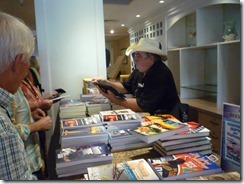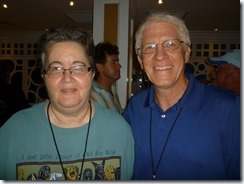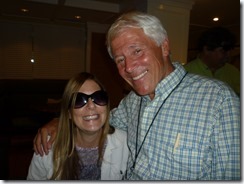Mystery fans enjoy a romantic subplot that is slow and subtle. In a series, you don’t want to resolve the relationship by the end of book one. You’ll want to build it step-by-step, advancing or retreating with each story. Especially in a cozy mystery, any graphic sex scenes must take place behind closed doors. Sexual tension is welcome, but it’s not an essential element.
As for the heroine juggling multiple boyfriends, this gets old after a few installments. Have her make a decision after the first few titles. It doesn’t have to be the right one, but it’s less frustrating for readers than to keep stringing two suitors along.
The key is to have complications so the main couple can overcome the issues that keep them apart. Once one complication is solved, you need to bring in another. Life is never smooth and always has problems.
Keep in mind that you are writing a murder mystery, and the romance takes second place to the puzzle of solving the crime. If you include a strong romantic subplot, your story may be termed a romantic mystery.
How to Blend Romance and Murder
Give your characters conflicts to keep them from making a commitment. The external conflict is your mystery. The internal conflict is the reason why the protagonists are hesitant to get deeply involved in a relationship.
Maybe your heroine was hurt by a former lover and fears getting burned again. Or she has a fierce need for independence because she has to prove herself worthy of respect. Why? What happened in her past to produce this need? Keep asking questions to deepen the motivation. Maybe your hero doesn’t want a family because his own parents went through a bitter divorce. Secretly he feels he isn’t worthy of being loved. Or maybe he suppresses his emotions and doesn’t know how to give affection. Whatever the opposite sex character does seems to deepen or challenge this inner torment.
Your characters are immediately attracted to each other through physical chemistry. This pulls them together while the inner conflicts tear them apart. Yet the benefits of being a couple begin to outweigh the risks. As the characters become emotionally closer, they’ll progress through the stages of intimacy.
Six Stages of Intimacy
1. Physical awareness: Your characters notice each other with heightened sensitivity. For example, the heroine is aware of the man’s physical attributes. She detects his personal scent and has a physical response to his presence. They steal looks at each other when together.
2. Intrusion of thoughts: Your character begins thinking of this other person often. The love interest invades your character’s mind.
3. Touching: First, it may be an arm around the shoulder, lifting a chin, touching an elbow. The couple comes closer until the desire to kiss is almost palpable. Have them lean in toward each other for a kiss and then interrupt them, so when they get to the next stage, it’s highly anticipated. Use the five senses as much as possible to enhance the sexual tension. Flirtatious banter can add to this mounting desire.
4. Kissing
5. Touching in more intimate places
6. Coupling: In a cozy, these scenes are off the page. But if you’re writing romantic suspense, you can include them. Here it’s important to focus on the emotional reactions of your characters rather than the act itself. This is lovemaking, not just sex.
Throw a wrench into the relationship when all seems to be going well. His former spouse appears on the scene. Her on-again, off-again other boyfriend shows up. The heroine does something thoughtless and alienates the guy she likes. He feels pressured and backs off. Finally, they both change and compromise to resolve their differences. Let’s see how this works.
The Bad Hair Day Mysteries
PERMED TO DEATH: Hairstylist Marla Shore meets Detective Dalton Vail. [girl meets boy]. While instantly attracted to each other, they share a mutual distrust. Marla is the prime suspect in her client’s murder [external conflict]. Dalton is suspicious of her, and rightfully so. Marla hides a secret that gives her a motive. Meanwhile, Marla is suspicious of Dalton’s interest because she thinks it’s a pretense to interrogate her. At the story’s end, he asks her for a date and she accepts [relationship moves forward].
HAIR RAISER: Marla meets Dalton’s daughter [forward]. She dates a handsome accountant who earns her family’s approval but may be a murder suspect [relationship moves backward]. Marla and Dalton share their First Kiss [forward].
MURDER BY MANICURE: Marla takes Dalton’s daughter, Brianna, to dance class [forward]. Marla pretends to be her friend Arnie’s fiancée so he can rid himself of an amorous old flame. They coax Dalton to date the woman instead. Marla gets jealous of Dalton when he pays the woman more attention [backward]. Marla earns his daughter’s regard [forward].
BODY WAVE: Marla’s ex-spouse, Stan, enters the picture when his third wife is murdered. Marla and Dalton work together to solve the case [forward]. Stan stirs up feelings Marla would rather forget. Dalton is jealous. Marla accuses him of wanting to pin the murder on Stan [backward].
HIGHLIGHTS TO HEAVEN: Marla and Dalton argue over his restrictive rules for Brianna, and Marla feels she has no place in his life if he won’t listen to her advice [backward].
DIED BLONDE: Dalton acknowledges his need for Marla, and he proposes [forward].
DEAD ROOTS: Dalton meets Marla’s extended family. He presents her with an engagement ring [forward].
PERISH BY PEDICURE: Marla meets the parents of Dalton’s dead wife. Dalton takes their side [backward].
KILLER KNOTS: Marla meets Dalton’s parents on a cruise. She and Dalton set a wedding date [forward].
SHEAR MURDER: Marla and Dalton tie the knot.
If your people get hitched, it doesn’t mean their problems are over. Keep throwing roadblocks in their way. Life is never perfect. In reality, married couples still have conflicts as they learn to face life’s challenges together. If you keep your sleuth single, make sure to motivate her choices to show why this path is right for her. Either way, keep things changing and evolving between your characters. It’s this personal thread that compels readers to come back for more.
Blending Romance and Mystery #amwriting #writingtip Share on XAre you a fan of a romantic subplot in a mystery?






















